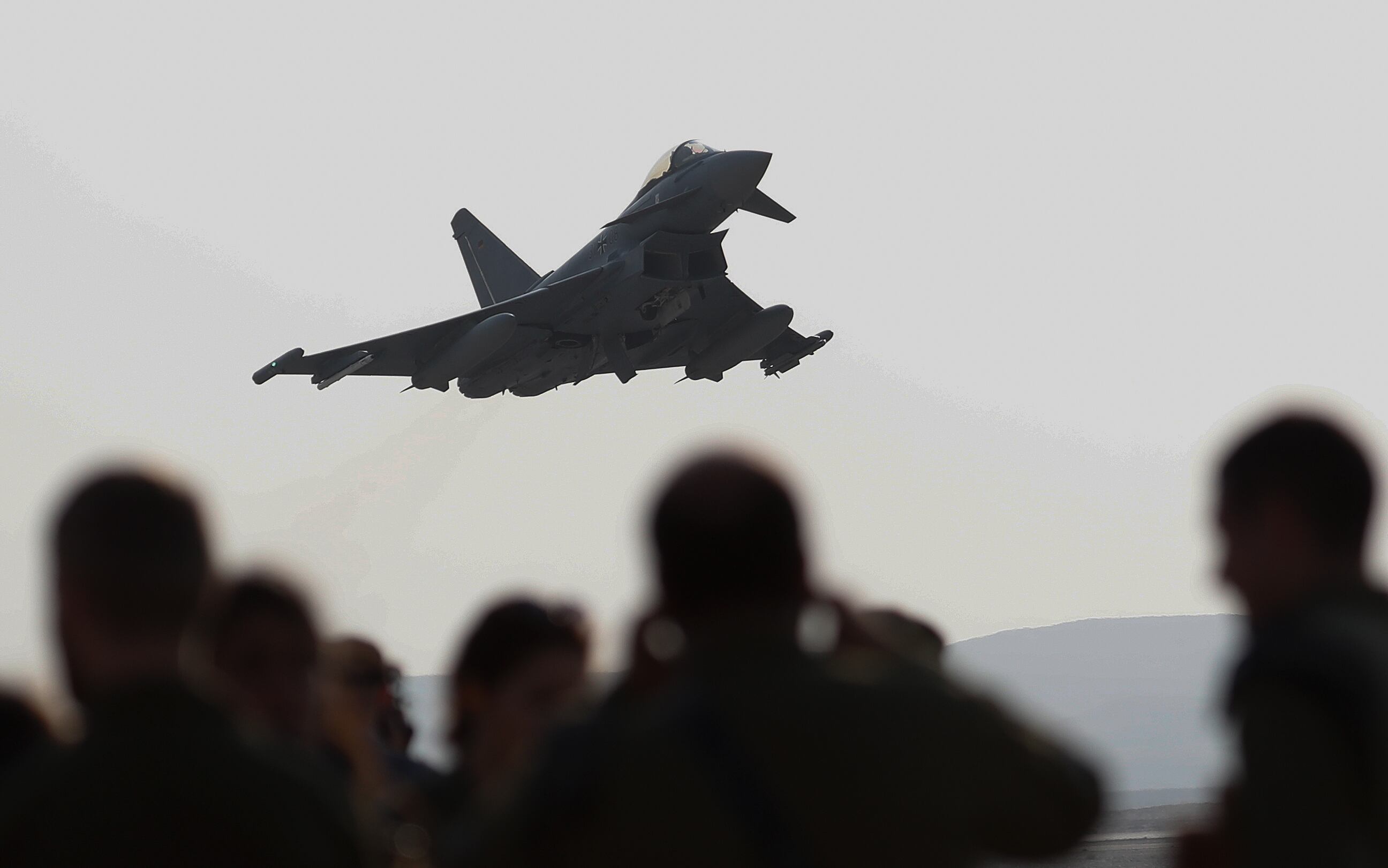LONDON — Britain’s Royal Air Force is on course to get its own multi-functional active electronically scanned array radar by the middle of the decade to equip Typhoon combat jets as a result of a £317 million (U.S. $420 million) deal between the Ministry of Defence and industry announced Sept 3.
BAE Systems and Leonardo have signed up to deliver what is known as the European Common Radar System Mark 2 radar to equip the RAF’s Typhoon fleet with a multi-functional array providing advanced electronic-warfare and electronic-attack capabilities, as well as more traditional radar functions.
The deal includes the industry partners delivering the first Mk2-equipped Typhoons in 2022 for test and evaluation work, as well as three complete radars.
The initial operating capability of the upgraded RAF jets is planned for soon after 2025.
An Mk2 production contract will be required to take the program to its next phase but some long-lead manufacturing of some items is already included in this latest deal.
The announcement is the latest step in a decade-long investment by the British, led by the UK arm of Leonardo, in active electronically scanned radar technology.
Leonardo already produces AESA radars for the Saab Gripen fighter, and the company’s systems are also being fitted to Typhoons for export customers Kuwait and Qatar.
The British plan to equip their 40-strong fleet of Typhoon Tranche 3 jets with the new radar but will decide at a later date whether to take up the option of fitting out the earlier Tranche 2 aircraft with the technology.
Aside from its integration work on Mk2 BAE is separately already under contract with the MoD to conduct weapons interface work.
Work on the Mk2 is a key step in Britain’s efforts to mature technology updating for Typhoons ahead of possible inclusion of the know-how in the Tempest sixth-generation combat jet project now being pursued as part of a wider air combat strategy.
Consultant Howard Wheeldon, of Wheeldon Strategic Advisory, said the decision to push forward with the Mk2 is long overdue.
RELATED

“The AESA radar decision is one that has been far too long in the making in my view but one that, after years of seeming procrastination, is extremely pleasing … one of the most welcome and important development/and procurement decisions that we are likely to see before publication of the integrated defense, security and foreign policy review due later this year or early next,” he said.
The announcement of the next step in Britain’s intentions to go their own way with development of the Mk2 system comes just weeks after Typhoon national partners Germany and Spain revealed they were going ahead with the development and manufacture of the Hensoldt-led European Common Radar System Mk1 version.
Only Italy among the four Typhoon partner nations has yet to decide on a replacement for the effective but aging Captor-E mechanically scanned radar currently in operation.
Britain and Italy both operate the Lockheed Martin F-35 alongside their Typhoons.
Although Britain and its partners have undertaken substantial work together on common AESA development work through the Euroradar consortium, the Mk2 is effectively a completely different product from the Mk1 forward of the common power supply.
Andrea Thompson, managing director Europe & International for BAE Systems’ air sector, said the new capability would retain Typhoon’s operational relevance for years into the future.
“This capability will allow Typhoon to take its place in the future battlespace for decades to come, maturing key technologies for future combat air systems and ensuring interoperability. As well as securing highly skilled jobs, it will sustain the key skills needed to keep the UK at the forefront of the global combat air sector.,” she said.
In a joint statement BAE and Leonardo said the multi-functional array radar technology based on AESA was revolutionary will provide game-changing capabilities.
“It has significantly more transmit-receive elements than other radars, making Mk2 the most capable fighter AESA radar in the world, maintaining the same power and precision of traditional radars but also enabling the simultaneous operation of its wide-band electronic warfare functionality,” said the companies.
Andrew Chuter is the United Kingdom correspondent for Defense News.








